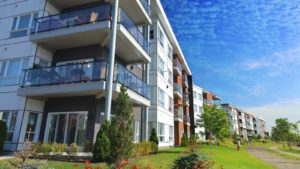Improving Wireless Connectivity and Performance in Multi-Unit Environments for Optimal Customer Satisfaction
Improving Wireless Connectivity and Performance in Multi-Unit Environments for Optimal Customer Satisfaction
Blog Article
Within today's world, maintaining a robust and dependable Wireless connection is crucial, especially in multi-unit settings like flats or condominiums. Many people depend on the internet for work, education, and entertainment. Nonetheless, Wireless transmissions can struggle to reach every corner of these structures due to multiple barriers. These hindrances can include walls, floors, and other electronic devices that interfere with the signal. To improve Wi-Fi signal strength and functionality in these environments, it is critical to understand some basic principles of wireless networking.
One effective way to enhance Wi-Fi performance is by strategically positioning gateways and extenders throughout the property. A middle placement is usually ideal, as it enables the coverage to propagate uniformly in all areas. In spacious multi-unit residences, multiple repeaters may be required. These units assist increase the reach of the wireless infrastructure and deliver stronger service to occupants in different sections of the structure. Additionally, deploying equipment that adhere to the latest wireless standards can lead to faster speeds and better overall performance.
Another important factor in optimizing wireless connectivity is minimizing interference from other electronics. Most household appliances, such as ovens and cordless phones, can disrupt Wi-Fi signals. It is advisable to position modems away from these devices to ensure a more stable signal. Additionally, adjusting the frequency configuration on a router can help minimize conflict from adjacent networks. The majority of devices by default select the best band, but manually selecting a less congested one can improve efficiency.
Periodically updating device software is also crucial for ensuring optimal Wi-Fi stability. Manufacturers frequently issue updates that resolve bugs and improve protection measures. Maintaining the firmware current guarantees that users take advantage of the latest enhancements and defenses against potential risks. Furthermore, monitoring network activity helps detect which devices utilize more bandwidth, allowing for better allocation of available capacity.
Finally, informing residents blog link about best practices for utilizing Wi-Fi can greatly improve their performance. Simple steps such as pairing only necessary units, using Ethernet connections when possible, and routinely rebooting the router can improve reliability. By creating a culture that understands how to maximize their Wi-Fi efficiency, multi-dwelling environments can elevate user experience and ensure that everyone enjoys important source a consistent Wi-Fi connection. This integrated approach of planned placement, reducing interference, managing equipment, and informing users will lead to a more efficient and satisfying Wi-Fi usage for all residents.